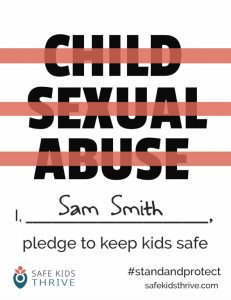Massachusetts’ Juvenile Justice System Response…
Massachusetts’ Juvenile Justice System Response to Problem Sexual Behavior by…
Home / Read the Report
Collaboration is “a mutually beneficial and well-defined relationship entered into by two or more organizations to achieve results they are more likely to achieve together than alone.” 1
Collaborative efforts between individual YSOs and local service providers in the community can be an effective means of preventing child maltreatment. Community partnerships for the welfare of children, and child protection coordinating committees or task forces, provide an organizational structure that allows community organizations like YSOs to work together with other local resources involved in meeting the needs of maltreated children and their families. A community-based effort can define roles and responsibilities, increase communication, provide guidance, identify gaps in services, and avoid duplication of effort, which enhances the efficient use of existing services and resources.
YSO efforts to create child abuse prevention programs can be strengthened by including an emphasis on building collaborative relationships with education and training, social service delivery, investigative/law enforcement, and child/youth advocacy expertise in the community. Some of these activities and agencies may include:
Community partnerships also foster more effective communications. In terms of considering a communications strategy for incidents or allegations of child abuse and neglect, it is important to remember that when actual instances of child abuse are uncovered, particularly child sexual abuse, they are seldom isolated. Experience (and research) shows that individuals who victimize children do so consistently and over long periods of time. When discovered, and within the bounds of any legal investigation and the privacy and reputation of the individuals involved, communications should promote the development of cooperative and open relationships. To that end, YSOs should communicate appropriately with the communities they serve, the general public, and members of the media regarding complaints of child abuse. Effective, transparent communication serves not only to legitimize the commitment to building safe environments, but also may enable others who suffered (or are suffering) similar abuse to come forward and identify themselves.
YSOs working to build or strengthen their child protection programs do not need to “go it alone.” Because YSOs are part of the fabric of the communities in which they reside, community partnerships are one of the best ways to stay informed and to utilize the resources and expertise the partnerships represent – not only in terms of building safer environments in their own organizations, but also in partnering with the larger, societal efforts that address the issues of child abuse and neglect as a shared concern.
1 Winer, M., & Ray, K. (1994). Collaboration handbook: Creating, sustaining, and enjoying the journey (p. 24). Saint Paul, MN: Amherst H. Wilder Foundation.

Join us and commit to learning how you can protect the children you serve.
Customized child sexual abuse prevention guidelines to meet the unique needs of any organization that serves children.
Safe Kids Thrive is managed by the Children's Trust of Massachusetts
Learning Center Registration
Sign up for an account and start your learning experience.
Free Online Assessment
Let us help you find out where to start.
